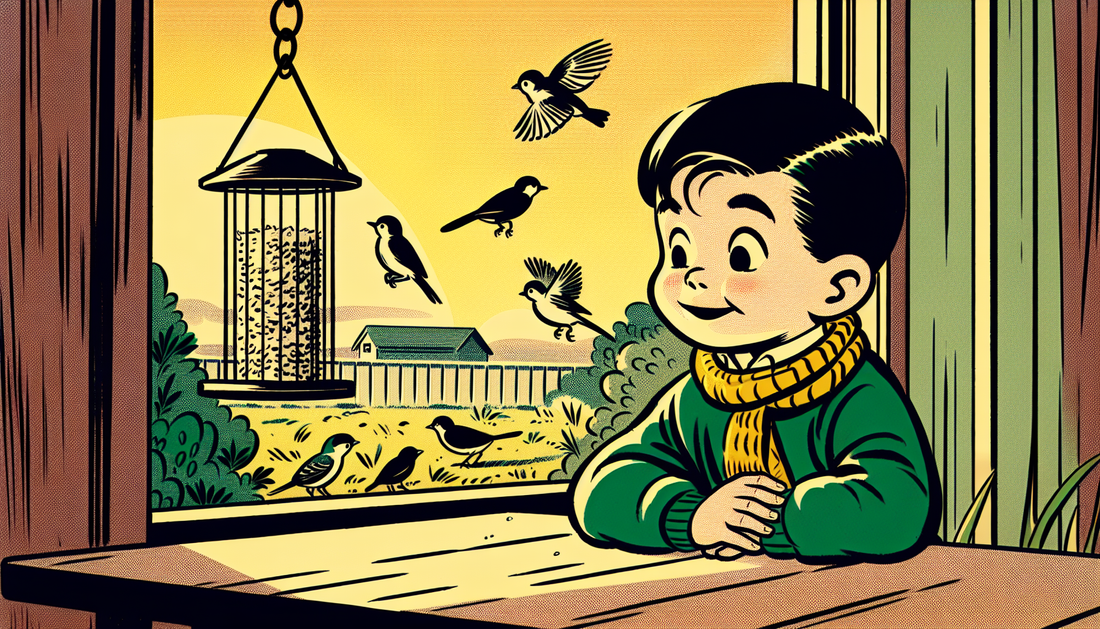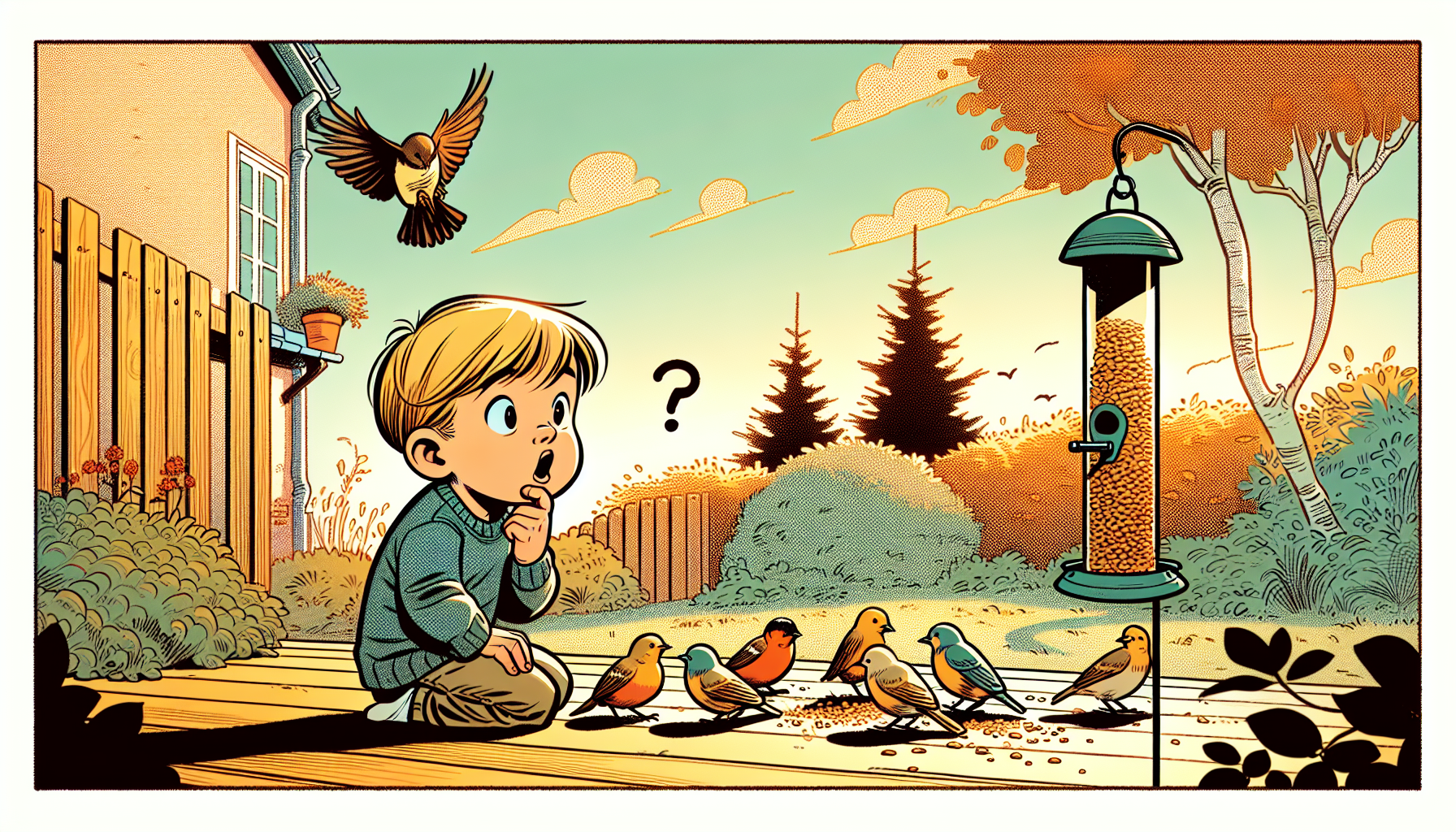
Why do birds migrate south? Fascinating insights into bird migration
Why do birds migrate south? This question arises anew every year in the fall - especially among gardening enthusiasts, bird lovers and nature lovers. Bird migration is a fascinating natural phenomenon that is closely linked to the seasons, foraging and breeding biology. While some species such as swifts or swallows travel thousands of kilometers to Africa, others such as robins or blackbirds stay in our gardens all year round or even visit us in winter. In this article, you will find out what is behind bird migration, how you can observe migratory birds and which techniques are suitable for this. We also provide practical tips on how to make your garden bird-friendly - for families, amateur gardeners, senior citizens and those interested in technology alike.
Why do birds migrate south in the fall?

The annual migration of birds is no coincidence, but an evolutionarily optimized behaviour that ensures the survival of many species. Two main factors determine migration behavior: food supply and breeding conditions.
Food shortage in winter
In our latitudes, it is difficult for many birds to find sufficient food in winter. Insectivores such as the chiffchaff or the pied flycatcher often leave Germany as early as September, as their main food supply dries up in the cold climate. They spend the winter in Africa, where insects can also be found in winter.
Grain-eaters such as chaffinches or tits, on the other hand, can often stay, as they eat seeds, berries and nuts. With additional food sources in the garden, they have a good chance of surviving the winter. These so-called partial migrants decide whether to migrate or not depending on the weather conditions.
Optimal breeding conditions in summer
Many migratory birds use Central Europe specifically for breeding. Long days, mild temperatures and an abundance of food provide ideal conditions for breeding and nest protection. As soon as the young have fledged, they begin their retreat to warmer regions. Bird migration thus connects two habitats that are both necessary for reproduction and survival.
How does the behavior of native birds change over the course of the year?
Anyone who regularly observes birds quickly recognizes that their behaviour follows a seasonal rhythm of breeding, foraging and preparing for winter. Even resident birds such as sparrows and blackbirds adapt to the season.
Spring to late summer: time for breeding and rearing young
The mating season often starts at the end of February, at the latest in March. Pairs form territories, build nests and raise their young. Vegetation grows and insects are plentiful - ideal conditions for chicks. Migratory birds specifically return during this phase.
Nature is coordinated: The time of return, the available food and the development of the plants form a functional unit. In this way, the young can be optimally reared.
Fall and winter: Focus on energy and survival
As the days get shorter, behavior changes. Territory fights diminish, vocalizations are silenced and foraging becomes the main task. Resident birds gather energy reserves or make use of the food provided.
In the winter months, guests from northern Europe can often be observed, such as waxwings and bramblings. If you look carefully, you will discover exciting natural events even in a seemingly quiet garden.
What techniques help with birdwatching?
With modern technology, you can experience bird behavior directly from your balcony or garden. Special cameras, apps and sensors make observation easier for beginners and advanced users - especially in the cold season when many animals come close to feeding sites.
The right camera for your garden and balcony
Rely on weatherproof wildlife cameras or special bird house cameras. The following features are important:
- At least full HD resolution for good image quality
- Motion detector with infrared sensor to only trigger when there is activity
- Night mode for recording at dusk or in the dark
IP cameras with a Wi-Fi connection and app control are advantageous. This allows you to see what is happening in the garden and save or share images while you are out and about.
Power supply and network technology in the garden
If there is no power socket within reach, solar sets with a power bank are a good option. Look out for frost-resistant batteries. A stable WLAN is helpful for transmitting data - optionally supported by repeaters or mesh systems.
Alternatively, some camera models save to SD card. Don't forget to read out the recorded data manually on a regular basis.
How do you protect migratory birds in your own garden?
In addition to observation, protection also plays a key role. Birds can be disturbed, especially in resting places such as gardens, balconies or parks. Many risks can be avoided with a few simple measures and legal knowledge.
Observe nature conservation law
In Germany, the Federal Nature Conservation Act protects all wild bird species. Special regulations apply between March 1 and September 30:
- Hedge cutting is prohibited in order to secure nesting sites
- Nesting aids may not be removed or cleaned during the breeding season
- Sources of disturbance such as drones, bright light or sound systems near the nest must be avoided
Find out in advance whether your property is located in or near a protected area. Helpful information is provided, for example, by the NABU.
Create quiet retreats
Birds are particularly sensitive to disturbance while resting. Set up feeding areas in sheltered corners of the garden and refrain from noisy work in the early morning or at dusk.
Reflective glass surfaces are often a source of accidents. Attach UV-foil markings to windows to prevent collisions. In this way, you actively support bird protection - even without a great deal of effort.
Avoid mistakes and make your garden bird-friendly
If you want to get active, there are a few basic things you should bear in mind. Many enthusiastic birdwatching projects fail because of small mistakes. Locations, technology and hygiene can make all the difference.
Place feed dispensers correctly
Avoid locations in direct sunlight or close to the ground where cats lurk. Elevated locations with privacy screens are ideal:
- At least 1.5 m from the ground
- Protected at the sides by bushes, but with sufficient field of vision for escape
- Easily accessible for regular cleaning
Hanging silos are recommended instead of open trays - they are more hygienic and weather-resistant.
Using technology correctly and trouble-free
Cameras, motion detectors or lights should never be aimed directly at nest openings or resting areas. Constant infrared lighting can also have a stress-inducing effect.
- Use inconspicuous camera housings in natural colors
- Avoid flashing displays or movements close to the birds
- Pay attention to privacy when neighboring areas are in the field of view
With a little consideration and knowledge, you can observe birds without disturbing them - and use your technology efficiently.
Conclusion: Bird migration not only offers an insight into a fascinating natural phenomenon - it also invites you to become active yourself. With the right technology, design and a little understanding of the behavior of our feathered roommates, garden owners and nature lovers can make valuable contributions to species conservation. Get started now - and discover the wonders of bird migration right on your own doorstep.
FAQ: Frequently asked questions about bird migration and observation
When does bird migration begin in Germany?
The fall migration usually starts in mid-August and lasts until the end of October. It is particularly visible when the weather is favorable in the morning hours or on clear nights during migration nights.
Which bird camera is recommended for beginners?
WLAN-capable IP cameras with full HD resolution, night vision and a motion sensor are ideal - e.g. wildlife cameras with solar power or bird house cameras with an app connection.
Can you feed birds all year round?
According to NABU, feeding is permitted all year round as long as the hygiene and location are right. It is important to provide varied food according to the species: grains, fatty food or dried insects.
How can bird strikes on windows be avoided?
UV-marked stickers or special protective films make glass surfaces visible to birds. Alternatively, nets mounted on the outside or staggered feeders away from the pane can help.
Which bird species stay in Germany in winter?
The most common resident birds include blackbirds, great tits, house sparrows, jays and great spotted woodpeckers. Some finch species also spend the winter here - especially if there is enough food available.
